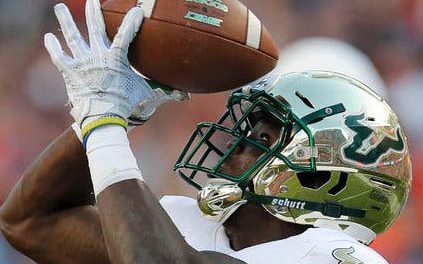As a golf enthusiast, you want to make sure that your driver is not too long for your swings, and that the driver’s head promotes a good forgiveness rating and trajectory. Your driver is the most expensive golf club in your bag, so it makes sense to choose the right one for you. Using the right driver with the right clubhead significantly improves your performance.
Driver selection can be tough for most players, but knowing what to look for will help you choose one confidently. Learn helpful tips when selecting a good golf driver head for your golfing needs.
Choosing the Right Clubhead Size
Size matters when choosing the best clubhead size. When measuring a driver’s head, it is expressed by volume in cubic centimeters. The maximum size allowed by great golf governing bodies is 460 cubic centimeters.
Latest golf drivers range between 440 to 460 cubic centimeters. A smaller size of the clubhead is best suited for players who prefer to shape the golf ball more in the air. On the other hand, larger sized clubheads are suited for golf players who search for more forgiveness. Tour Shop Fresno forged golf heads have a variety of sizes that you can choose from, so you can see which one is most suited for your golfing needs.
Choosing the Right Clubhead Material
It’s important to choose the right material for a clubhead because it also affects its performance. In the past, metal or steel woods or persimmon woods were used to make clubheads. Today, the latest golf drivers on the market are made of carbon composite heads or titanium. Because of its light, durable, and strong qualities, titanium is a popular choice for golf driver heads. Indeed, a crucial aspect of your golf club set is your driver with the right clubhead.
Here are some things you need to know about choosing the right clubhead material:
- Golf companies design 40 cubic centimeters golf drivers without needing to increase weight.
- Players swing the golf club faster, hitting the ball more accurately and further because the face of the driver has a larger sweet spot.
- Carbon helps in reducing the driver’s overall weight when used on the rear section or the crown of a clubhead.
Choose a Golf Driver that Provides the Right Amount of Loft
Aside from the golf driver head, you also need to choose a driver that can provide you with the right amount of loft. This step is considered the most critical aspect of your golf driver selection process. An amateur golfer tends to choose a loft based on what a professional player uses. However, you need to take time assessing the best loft that suits your skills.
Here are some tips and tricks when choosing the right amount of loft:
- Choosing the appropriate loft will help maximize your distance, and most golf drivers today range between 4 and 20 degrees loft.
- If your average swing speed is over 100 mph and you always hit the golf ball a long way, a golf driver with a loft of 12 degrees or less is suitable for you, as it will produce less backspin.
- If your average swing speed is below 90 mph, like most golfers, you’ll need a more lofted driver to increase the backspin and keep the ball aloft.
- You can determine your swing speed by the club you use when hitting a 150-yard shot. A 7-iron clubhead user typically has a speed of 95 to 104 miles per hour. On the other hand, a 6-iron provides 84 and 95 mph swing speed. But if you use an 8-iron or 9-iron clubhead, your swing speed is likely between 105 and 115 mph.
- If your swing speed is between 95 and 104 mph, you need a 10- or 11-degree loft. For a 105 and 115 mph swing speed, a 7- and a 9-degree loft is recommended. If your club-head speed is below 85 mph, consider using a loft angle ranging from 14 to 20 degrees. For golfers with 130 mph and above clubhead speeds, find a 4- to 7-degree loft.
Note: You can compare the feel of golf drivers within the loft range that perfectly fits your clubhead speed by practicing at the facility of your pro shop or local golf equipment store. The torque and shaft stiffness should be the same when comparing clubs to ensure you’re correctly comparing the drivers.

Find One that Promotes a Good Golf Trajectory
Choose a driver that can provide you with a better control trajectory that’s most suited to your play skills. For instance, if you hit the ball low off the tee, find a golf driver with a high trajectory rating. The trajectory rating is different from the loft. For example, a golf driver has a 10-degree loft, but it will react more with an 8-degree loft if the center of gravity is towards the front. Indeed, every golf player wants to be a pro by choosing a driver that promotes a good golf trajectory.
Forgiveness Rating That Matches Your Game Quality
Your golf driver should have a forgiveness rating that best suits the quality of your play. For example, if you hit tee shots often, you miss the “sweet spot, ”so you need a golf driver that can provide you with a maximum forgiveness rating. For most golfers, choosing a golf driver with the largest head is the best choice for maximum control. By selecting a forgiving golf driver, you’ll be able to shoot longer shots, going straight down the fairway.
Here are the qualities of the most forgiving golf drivers in the market today:
- Offer maximum forgiveness through innovative inverted cone technology for increased sweet spots
- Great adjustability because of sliding spin weights and dedicated loft sleeve
- Low center of gravity for excellent launch height
- Deliver long shots with reduced spins
- Easy to swing due to a premium head and shaft design
- Versatile adjustment options
Conclusion
Now you’re more confident to choose the right golf driver head. By doing so, you’ll have more stabilized swings, huge sweet spot, precise adjustments, lower center of gravity, and maximized swing speeds. You’ll be able to hit the golf ball right on target using the latest technologies and become a better golf player.











